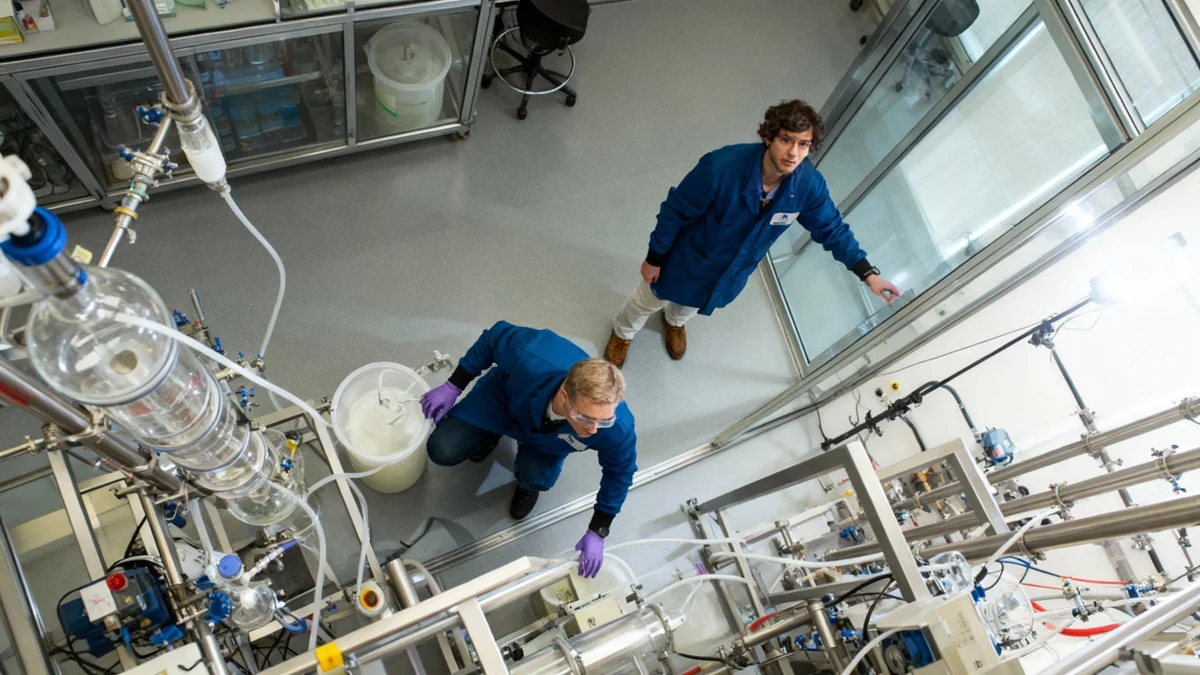A significant shift is underway in corporate real estate as major companies begin to permanently reduce their office footprints. New industry analysis reveals that nearly 40% of large corporations are actively downsizing their physical office space, a direct response to the widespread adoption of hybrid and remote work models that have persisted since 2020.
This trend signals a fundamental rethinking of the traditional workplace, with businesses prioritizing flexibility and cost savings over sprawling, centralized headquarters. The move is not just about cutting costs; it reflects a deeper change in corporate culture and employee expectations across multiple sectors.
Key Takeaways
- Nearly 40% of large companies are downsizing their physical office space in response to hybrid work models.
- The primary drivers for this shift are cost reduction, employee demand for flexibility, and access to a wider talent pool.
- Companies are reinvesting savings from real estate into technology, employee benefits, and smaller, collaborative satellite offices.
- The tech and finance sectors are leading the trend, though adoption varies by industry and company culture.
The Economic Drivers Behind Downsizing
The primary motivation for reducing office space is financial. Commercial real estate represents one of the largest overhead costs for many businesses, second only to payroll. With office utilization rates hovering around 50-60% on average during midweek peaks, executives are questioning the logic of maintaining vast, underused properties.
According to a recent corporate survey, companies reducing their office footprint expect to save an average of 30% on real estate costs. These savings are being reallocated to other strategic priorities.
By the Numbers
An internal analysis of corporate spending shows that funds previously earmarked for rent and facility management are now being channeled into:
- Technology and Cybersecurity: 45% of savings
- Enhanced Employee Benefits: 30% of savings (including wellness programs and home office stipends)
- Talent Acquisition and Training: 25% of savings
This reallocation is not merely a cost-cutting measure but a strategic investment in a more distributed and digitally-enabled workforce. By investing in robust remote work infrastructure, companies aim to boost productivity and security regardless of where employees are located.
A New Vision for the Office
The office is not disappearing entirely; its purpose is evolving. Instead of being a mandatory daily destination, it is being reimagined as a center for collaboration, innovation, and culture-building. Companies are trading large, open-plan floors for smaller, more dynamic spaces.
The Rise of the 'Hub-and-Spoke' Model
Many organizations are adopting a "hub-and-spoke" model. This involves maintaining a smaller central headquarters (the hub) for key meetings and events, supplemented by a network of smaller, flexible satellite offices or co-working spaces (the spokes) located closer to where employees live.
This approach offers several advantages:
- Reduced Commute Times: Improves employee work-life balance and satisfaction.
- Access to Broader Talent Pools: Companies can hire skilled workers who live outside major metropolitan centers.
- Increased Resilience: A distributed workforce is less vulnerable to disruptions affecting a single location.
Case Study: Tech Firm 'Innovate Solutions'
Innovate Solutions, a mid-sized software company, recently swapped its 100,000-square-foot downtown headquarters for a 30,000-square-foot "collaboration hub." It also provides employees with stipends for co-working memberships near their homes. The company reports a 15% increase in job applications from outside its traditional hiring region and a 10% improvement in employee retention since implementing the new model.
Navigating the Challenges of a Hybrid Future
The transition is not without its difficulties. One of the most significant challenges is maintaining a cohesive company culture and ensuring equitable opportunities for all employees, whether they are in the office or working remotely.
"The biggest risk is creating a two-tiered system where in-office employees are perceived as more committed or have greater access to leadership," explained a human resources strategist. "Intentional, inclusive management is the key to making this work long-term."
To address this, companies are investing heavily in management training focused on leading distributed teams. They are also implementing new communication protocols and technologies to foster seamless collaboration and ensure that remote workers remain visible and engaged.
Impact on Commercial Real Estate and Urban Centers
This corporate shift is sending ripples through the commercial real estate market. Office vacancy rates in major cities have reached their highest levels in decades, putting downward pressure on rental prices.
Landlords and property developers are being forced to adapt. Many are converting traditional office buildings into mixed-use properties featuring residential apartments, retail spaces, and modern, flexible office suites. Others are upgrading their buildings with state-of-the-art amenities—such as advanced air filtration, fitness centers, and smart technology—to attract tenants who still value a premium physical workspace.
The long-term impact on urban economies remains a key question. While less daily commuter traffic may hurt downtown businesses like restaurants and shops, the rise of suburban satellite offices could revitalize local economies in smaller communities. The landscape of work is changing, and the physical world is changing with it.





